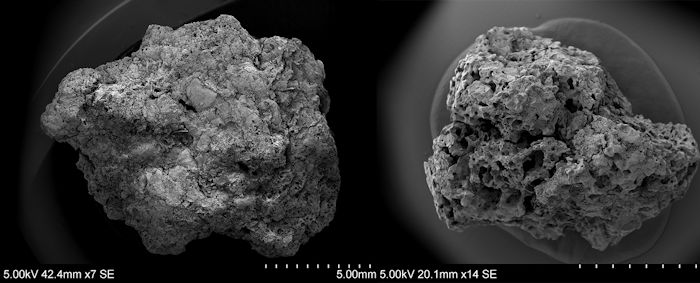Conny Waters – MessageToEagle.com – Remains of a Roman malting oven and charred spelt grains discovered during excavations in Bedfordshire could be the earliest physical evidence for beer-making in the UK, dating back more than 2,000 years to the Iron Age. Evidence of early Iron Age porridge and bread-making has also been uncovered.
Archaeologists unearthed the remains of a Roman oven during excavations at Field 44 in Bedfordshire, at a dig taking place near the Black Cat roundabout. Credit: Mola
The Iron Age in Britain began around 750BC and lasted until the coming of the Romans in AD43.
It was the arrival of ironworking techniques from southern Europe that brought Britain into the Iron Age. Iron was stronger and more plentiful than bronze and iron working revolutionized many aspects of life, most importantly agriculture. Iron tipped plows could turn the soil more quickly and deeply than older wooden or bronze ones, and iron axes could clear forest land more efficiently for agriculture. There was a landscape of arable, pasture, and managed woodland. There were many enclosed settlements and land ownership was important.
Left – microscopic sample on the showing what is believed the be the earliest evidence of beer making in the UK. Right – evidence of bread making. Credit: Highways England courtesy of MOLA Headland
The find was made by the team from the Museum of London Archaeology (Mola) and the Cambridge Archaeological Unit, at a site known as Field 44. After analyzing the grains scientists say people who lived there were involved in making beer.
“When we find an archaeological feature or a particular area of a site that we’d like to take a closer look at, a sample of the soil is taken and processed by our environmental team, who are able to make sense of the tiny clues that are not often visible on site. That’s where our team of archaeobotanists come in!
We’ve taken just under 9000 environmental samples from various points of interest along the route of the A14C2H. These samples hold tiny but vital pieces of information that can transform our understanding of how humans have interacted with the flora and fauna around them through time. Plant remains like seeds and grains can tell us how people used, cultivated, and manipulated plants and vegetation to create food, drink, clothing and shelter,” the Mola research team said.
“I knew when I looked at these tiny fragments under the microscope that I had something special. The microstructure of these remains had clearly changed through the fermentation process. Air bubbles typical of those formed in the boiling and mashing process of brewing are present. It’s like looking for a needle in a haystack but as an archaeobotanist it’s incredibly exciting to identify remains of this significance and to play a part in uncovering the fascinating history of the Cambridgeshire landscape,” a Mola spokesperson said.
Fragments of residue from early beer-making process. Credit: MOLA Headland Infrastructure
However, researchers caution that though the discovery is promising it is still too early to jump to conclusions because little evidence of the structures needed for brewing had yet been identified. Therefore, it can not currently be said with certainty that the people at Field 44 were completing the process on site.
“It is possible only malt was being produced here, which was then taken to be brewed elsewhere.
See also: More Archaeology News
This raises interesting questions about how the people living in this farm might have been interacting with neighboring communities as part of a wider trade network.
The germinated grains are likely to have been accidentally burnt, but this ancient mistake has benefitted our research,” Project science advisor Rachel Ballantyne said,
Written by Conny Waters – MessageToEagle.com – AncientPages.com Staff Writer








